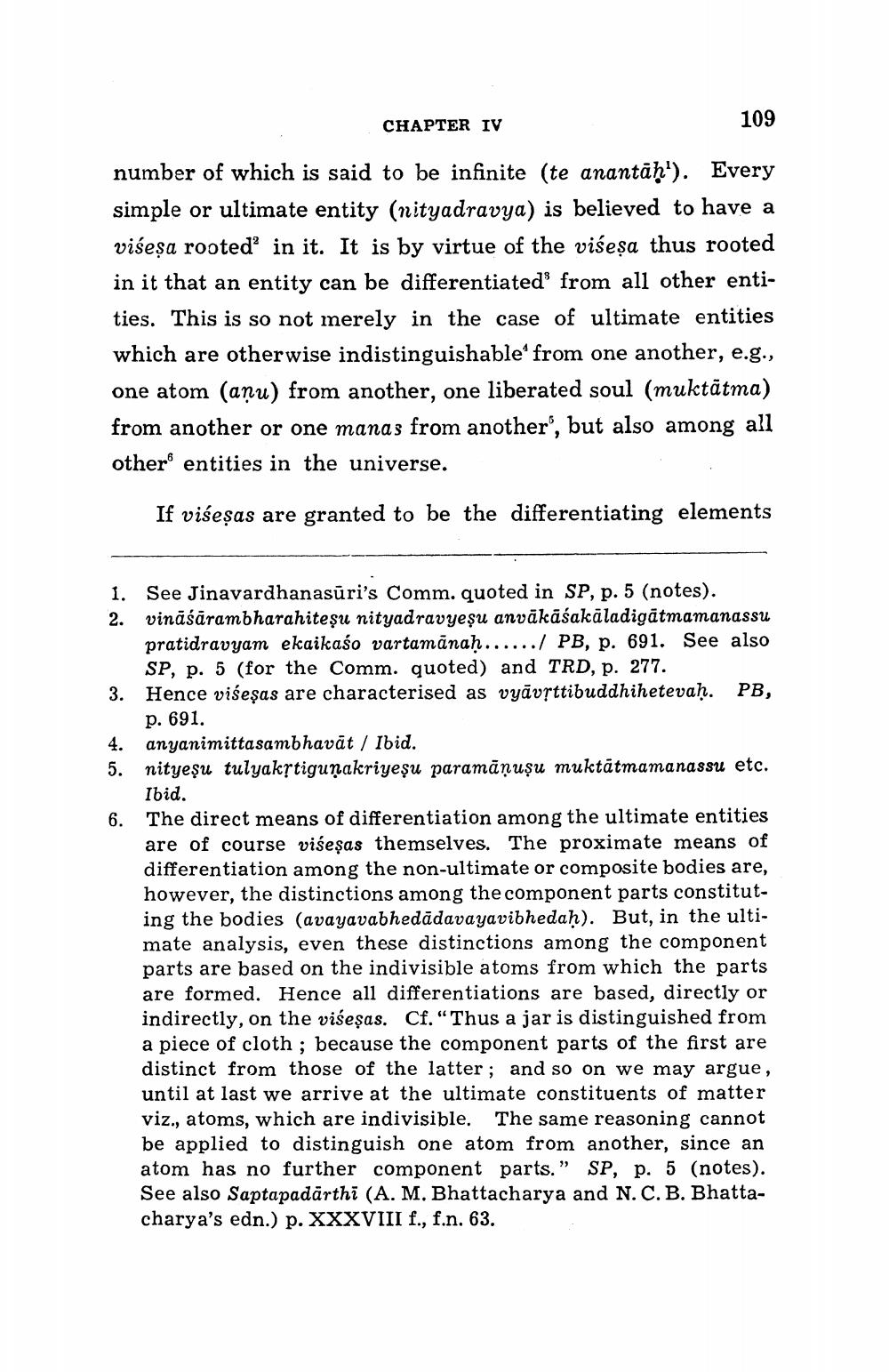________________
CHAPTER IV
109
number of which is said to be infinite (te anantāḥ'). Every simple or ultimate entity (nityadravya) is believed to have a viśeşa rooted in it. It is by virtue of the visesa thus rooted in it that an entity can be differentiated from all other entities. This is so not merely in the case of ultimate entities which are otherwise indistinguishable from one another, e.g., one atom (aņu) from another, one liberated soul (muktātma) from another or one manas from another", but also among all other entities in the universe.
If viseșas are granted to be the differentiating elements
1. See Jinavardhanasūri's Comm. quoted in SP, p. 5 (notes). 2. vināśārambharahiteșu nityadravyeşu anvākāśakāladigātmamanassu
pratidravyam ekaikaśo vartamānaḥ....../ PB, P. 691. See also
SP, p. 5 (for the Comm. quoted) and TRD, p. 277. 3. Hence višeşas are characterised as vyāvșttibuddhihetevah. PB,
p. 691.
anyanimittasambhavāt / Ibid. 5. nityeşu tulyakstiguņakriyeșu paramāņuşu muktātmamanassu etc.
Ibid. 6. The direct means of differentiation among the ultimate entities
are of course višeşas themselves. The proximate means of differentiation among the non-ultimate or composite bodies are, however, the distinctions among the component parts constituting the bodies (avayavabhedādavayavibhedah). But, in the ultimate analysis, even these distinctions among the component parts are based on the indivisible atoms from which the parts are formed. Hence all differentiations are based, directly or indirectly, on the višeşas. Cf. "Thus a jar is distinguished from a piece of cloth ; because the component parts of the first are distinct from those of the latter; and so on we may argue, until at last we arrive at the ultimate constituents of matter viz., atoms, which are indivisible. The same reasoning cannot be applied to distinguish one atom from another, since an atom has no further component parts.” SP, p. 5 (notes). See also Saptapadārthi (A. M. Bhattacharya and N.C. B. Bhattacharya's edn.) p. XXXVIII f., f.n. 63.




